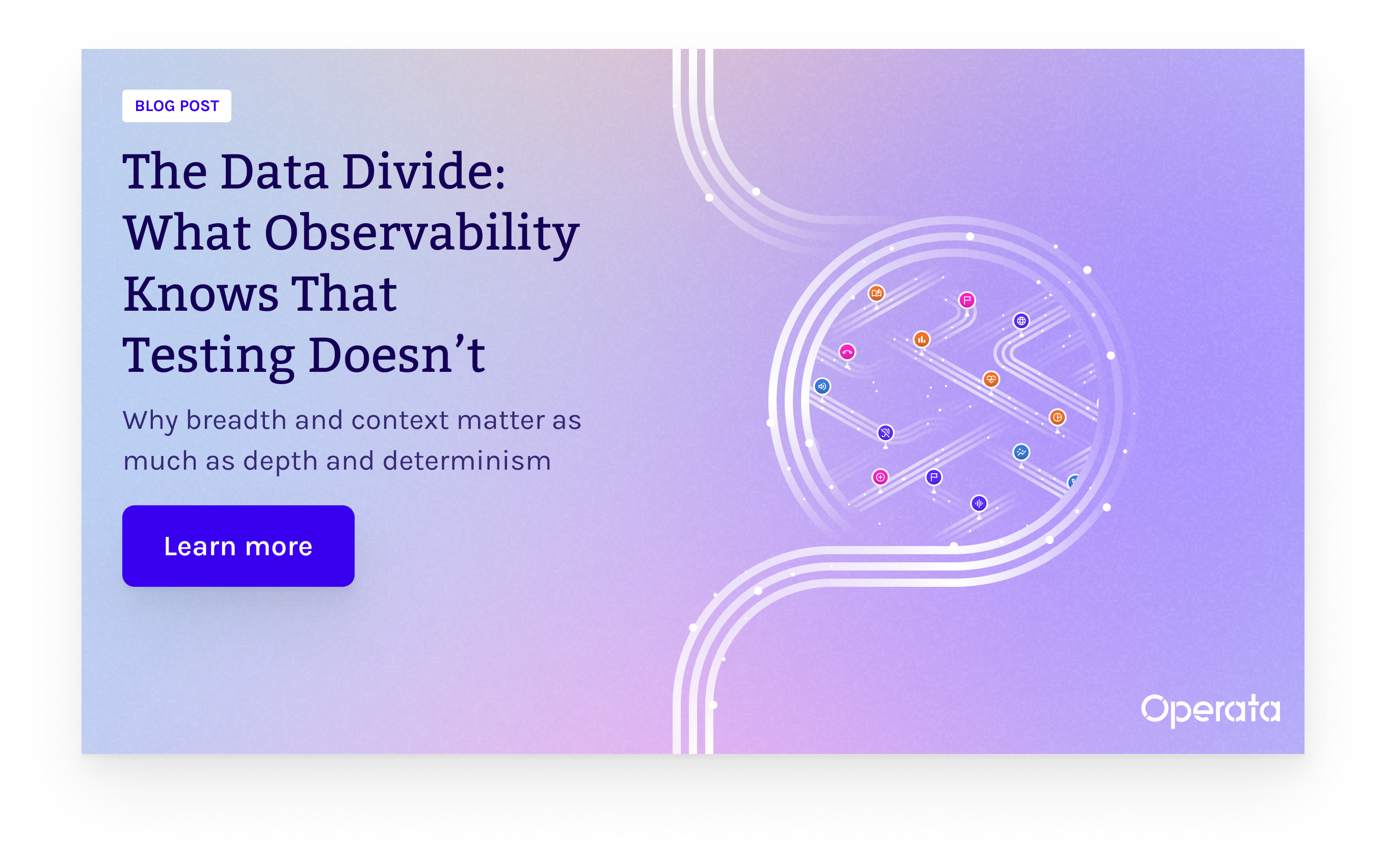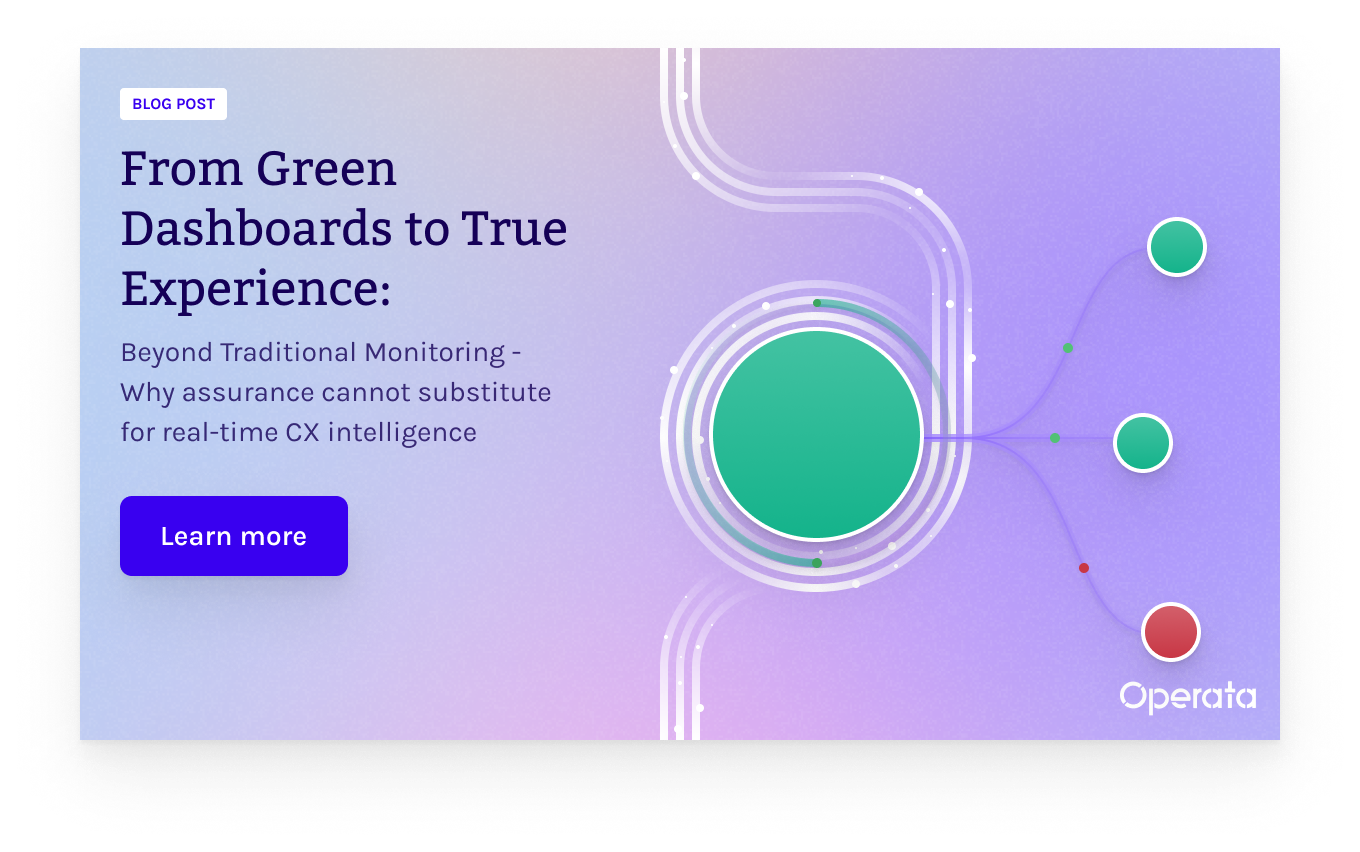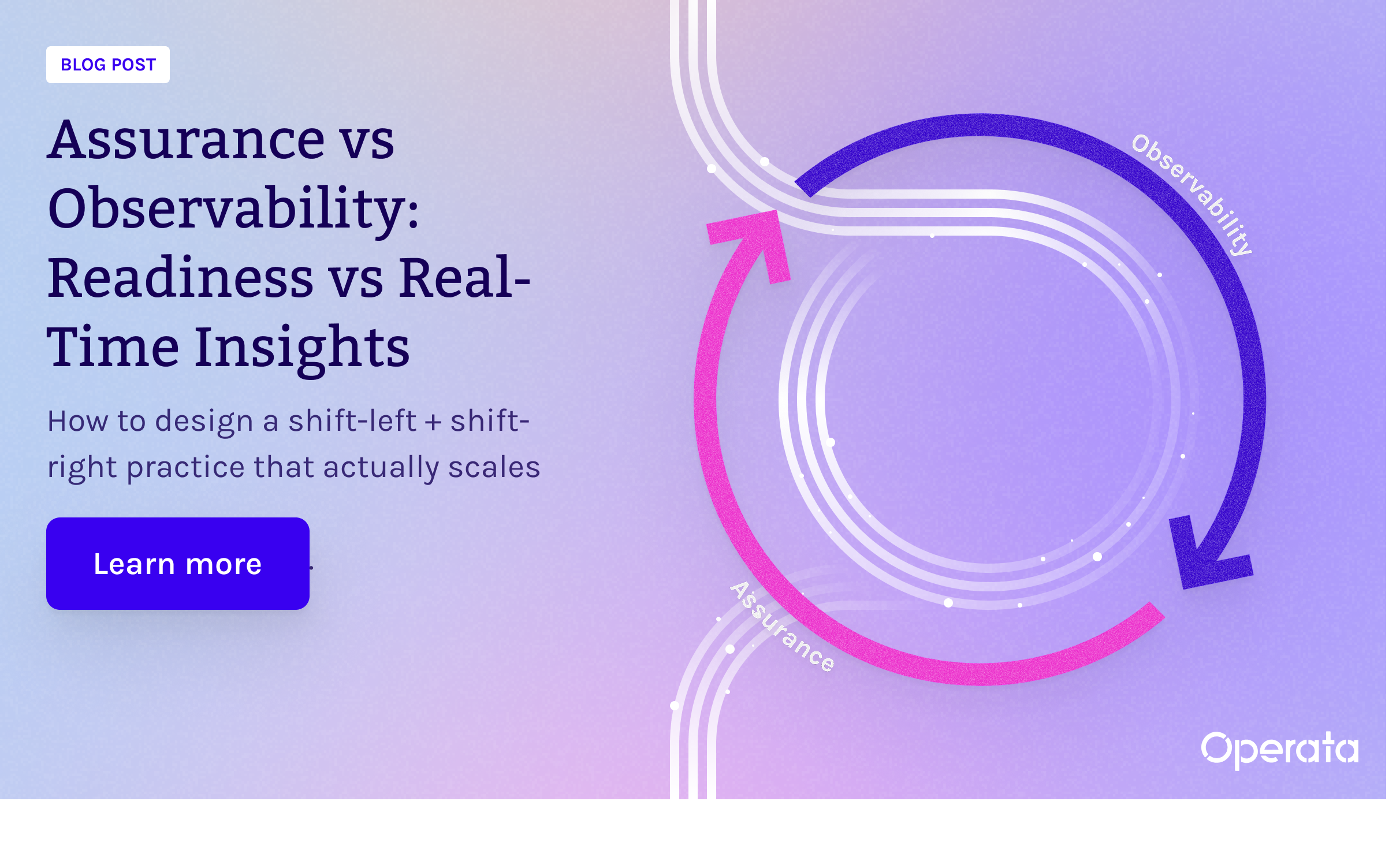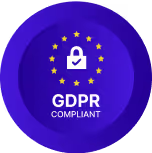Cloud contact centers have unique requirements for observability software. A cloud contact center operates in a complex ecosystem, interacting with various network elements, third-party services, and telephony carriers. Much of the ecosystem stands outside of the contact center’s span of control, on the other side of the “CCaaS demarcation line”. When the contact center supports a workforce of at-home agents or BPOs, this complexity only increases and places additional burden on IT and Operations teams for monitoring real-time performance. Therefore, having observability software that can monitor every second of every call, including those traversing to third-party/BPO contact centers, is crucial.
Additionally, delivering exceptional CX is no longer a differentiator; it’s a business-critical requirement. A study by Accenture found that 52 percent of consumers have switched provider in the past year due to poor customer service at a cost of $1.6 trillion USD. This increases the stakes for contact centers, to not only operate efficiently but also continuously improve CX. Traditional observability software is not tuned for improving contact center performance and CX, and doesn’t address all the requirements of today’s cloud contact center.
CX Observability software requirements list for cloud contact centers
When considering IT and Operations tooling to ensure a successful transition to and ongoing operation of a cloud contact center, here are some key observability software requirements to keep in mind:
- Must collect CX Observability data across technical, operations, and experience domains. Traditional observability tools lack the necessary tuning and curation of data to enable contact centers to deliver exceptional CX. Many issues facing cloud contact centers require correlation across data silos to uncover root causes and areas for improvement.
- Must be suitable for large enterprise contact centers. The software must have a proven capability to support your anticipated growth and peak periods without experiencing bottlenecks or other technical issues.
- Must align and integrate with the CCaaS solution architecture. For ideal architectural alignment and integration, the software must be built for, and run on, the cloud.
- Must be easy to deploy, without professional services or system integrator involvement. One of the primary drivers of cloud transformation is time-to-value. Your observability software should utilize cloud deployment best practices so that IT teams can deploy it quickly and easily.
- Must include features to resolve issues at scale. The software must provide interactive macro, detailed, and trended visibility into metrics that enable root cause identification for technical and operations issues impacting CX.
- Must provide observability tools that are tuned for cloud contact centers. The software must include monitoring and metrics specifically designed for cloud contact centers, such as WebRTC monitoring, audio quality scoring, end-to-end assurance tooling, and more.
- Must monitor CCaaS, network, and telephony carrier services for 100% of calls, including those traversing 3rd-party/BPO contact centers. The software must be capable of monitoring the end-to-end environment, across demarcation lines separating the CCaaS provider, telephony carriers, your network, your agents’ network(s), and your BPOs/MSPs.
- Must include call audio quality scoring based on ITU perceptual quality standards, e.g. MOS and/or POLQA. With voice calls relying on multiple networks across a cloud contact center environment, WebRTC observability with perceptual quality scoring such as POLQA is essential.
- Must provide real-time metrics. A cloud contact center is a complex, heterogeneous system that requires real-time monitoring of curated technical, operations, and experience metrics to ensure the highest level of uptime and performance.
- Must provide multiple ways to interact with CX Observability data. The software must provide data visualization in interactive dashboards, real-time proactive alerts and recommendations, and open-ended natural language interaction with data.
- Must provide WebRTC monitoring. Cloud contact centers rely on WebRTC for voice and other real-time communications; the software must be able to monitor WebRTC traffic in real time.
- Must provide agent workstation monitoring. The software must provide an easy-to-install component to collect real-time data for agents’ network performance, hardware utilization, operating system, web browser, softphone, audio levels, and background noise.
- Must provide agent headset hardware and software monitoring. The software must provide an easy-to-install component to collect agent headset, built-in microphone, and software. driver information.
- Must provide load testing, agent-initiated testing, and assurance tools. The software must provide load/stress testing, baselines, CCaaS service capacity, agent-initiated testing, and disaster recovery testing from end-to-end (carrier to agent/virtual agent, and back).
- Must support scheduled recurring, one-time, and ad hoc assurance tests. The assurance software must include features for scheduling recurring, one-time, and ad hoc tests.
- Must provide real-time alerts and recommended actions to agents, operations, and technical users. The software must draw correlated insights across technical, operations, and experience data to provide intelligent alerts and recommended actions to all users, including agents.
- Must integrate with alerting and issue tracking tools like Slack, PagerDuty, ServiceNow, Jira, etc. The system must provide integrations to popular alerting and issue tracking tools so that its real-time alerts and recommendations can be incorporated into IT and Operations workflows.
- Must provide an API for real-time events and data integration with external systems. The software must include an API based on open standards such as REST and JSON so that it can be easily integrated with other software in the cloud contact center or enterprise environment.
- Must meet authentication and access control standards such as RBAC. The software must utilize standard authentication and access control measure such as RBAC to ensure authorized users have appropriate access for their jobs to be done.
- Must support compliance standards such as SOC 2 Type 2. The software must support enterprise security and regulatory compliance standards such as SOC 2 Type 2.
- Must provide data and insights to all contact center stakeholders. While traditional observability tooling is designed for IT users, CX Observability software is designed for the needs and support the goals of IT teams supporting the contact center, contact center operations users, and contact center agents.
- Must align to business/company SLAs and CX metrics. Traditional observability tooling is designed to monitor technical performance metrics. However, contact center performance is evaluated on operational efficiency and CSAT-related metrics that are outside the scope of traditional observability tooling. The CX Observability software must enable the entire cloud contact center team to evaluate performance on operational and CSAT-related metrics.
Find the right tool for the job
In summary, cloud contact centers have unique requirements when it comes to observability software. Operating within a complex ecosystem, these contact centers interact with various network elements, third-party services, and telephony carriers. This complexity is further amplified when contact centers support at-home agents or BPOs, placing additional monitoring responsibilities on IT and Operations teams. Therefore, having observability software that can closely monitor every call, including those that traverse third-party or BPO contact centers, becomes crucial.
By leveraging CX Observability software, contact centers can deliver superior customer experience, resolve issues more effectively, and ensure the highest level of performance and uptime. If you would like to see how our solution can meet these requirements, we invite you to schedule a 1:1 demo with us today. Alternatively, you can start a free 14-day trial to experience the Operata Platform firsthand.
















